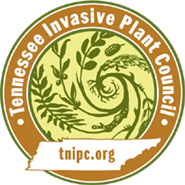Tussilago farfara L.
Coltsfoot| Threat Level | Category |
|---|---|
| Established | Forb/Herb |
|
Similar Species May be confused with the following native and/or non-native species. Landscape Alternatives lists native horticultural substitutes |
Taraxacum officinale Foliage Similarities |
|---|

Description
Height
Flowers grow to a height of 3-12 inches (7.5-30.5 cm).Leaves
The cordate (heart-shaped) leaves are slightly toothed, upright and the underside is whitish. They arise directly from the root with no main stem present. Individual leaves are 3-7 inches (7.5-17.5 cm) wide.Flowers
The solitary flowers are dandelion-like and bright yellow in color. There are several scaly white flower stalks per plant. Flowers emerge before the leaves in early spring through June.Seeds
The brown nutlets are attached to a pappus resembling the seeds of common dandelion.Images
Photo: Jan Samanek, State Phytosanitary Administration, Bugwood.orgMore images of Tussilago farfara
Life History
Coltsfoot is a perennial herb in the Asteraceae (Aster) family. It is native to Europe and has a long history of being used as an expectorant. The name 'Tussilago' comes from the Latin 'tussis' which means cough. The name Coltsfoot refers to the horseshoe-shaped leaves.Coltsfoot is a perennial with a multi-branched rhizome. In the early spring the flower stalks emerge before the leaves. Each stalk bears a solitary flower, which opens only on sunny days. The leaves appear after the flowers have matured; the flowers and leaves are usually not seen at the same time. The flowers and leaves arise directly from the rootstock. Coltsfoot reproduces both vegetatively and sexually. The roots can remain dormant underground for long periods of time. In some cases, coltsfoot has been known to reemerge after soil disturbance, and very small fragments of roots can produce new plants.
Habitat
Coltsfoot thrives in low-lying mesic areas including stream banks, moist field or pastures, roadsides, and disturbed areas. It can also be found drier sites and in poor soils. It is intolerant of shade and is not commonly found in wooded areas, though it has been documented invading forests following fire.Origin and Distribution
A native of Europe, this plant was probably brought to this country by early settlers for its medicinal properties. It has spread throughout the northeastern United States from Maine to North Carolina, west to Tennessee and north to Minnesota.Other states where invasive: NC, NJ, CT, ME. Federal or state listed as noxious, prohibited, invasive or banned: AL, CT, MA, OR.
Sources: Information on this plant page is derived primarily from the Great Smoky Mountains National Park Integrated Pest Management Plan.
